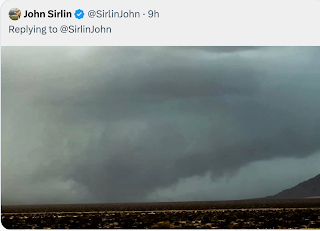How Did the Wheat Belt Rainfall Forecast Work Out?
The rains began gently falling Thursday evening on the parched wetlands of Stafford County.
By Sunday, more than five inches of rain filled nearly every basin at the Quivira National Wildlife Refuge, bringing the wildlife area back to life.
More than 8,000 ducks – Blue-Winged Teal and Northern Pintail – swooped in almost overnight; a Peregrine Falcon was spotted; and ovenbirds, Wilson’s Warblers and Blue-headed Vireo were out and about, according to Barry Jones, visitor services specialist at the refuge.
“As of Wednesday, there was no water in the refuge,” Jones said Sunday afternoon. “And now, the Big and Little Salt Marsh has substantial coverage – about 70 percent filled in both pools, respectively.”
And, the Rattlesnake Creek which feeds the wetlands, and which had stopped flowing months ago, is once again flowing and filling the refuge. ---- Beccy Tanner, The Wichita Eagle this morning
 |
| Saturday afternoon at the Smith House. We had a storm total of 2.64 inches. |
The most substantial rain in months fell across the winter wheat belt from late Thursday to Sunday. Here is the storm total; click to enlarge.
Because of its high importance to planing the 2013 winter wheat crop, we started forecasting this event on Monday. You can see that entire posting here. In it, I said I was putting my money on the European model which is reproduced below:
While it overforecast the rain in Missouri, considering it was 4 to 7 days ahead of the three-day event, I think it was a pretty good bet in that it showed widespread significant rain with a pattern that was roughly correct. What do you think of the qualifty of the forecast that far ahead?






Comments
Post a Comment